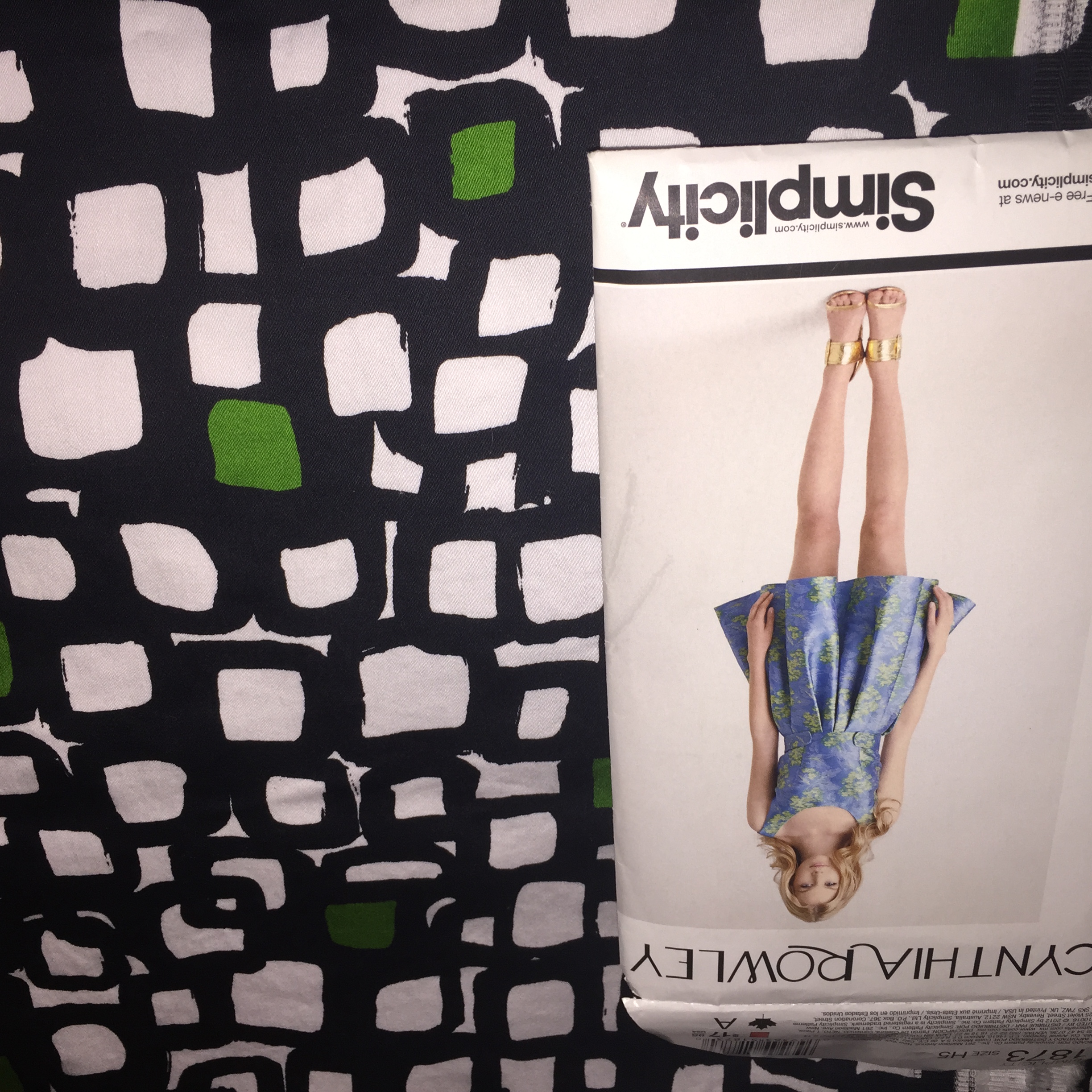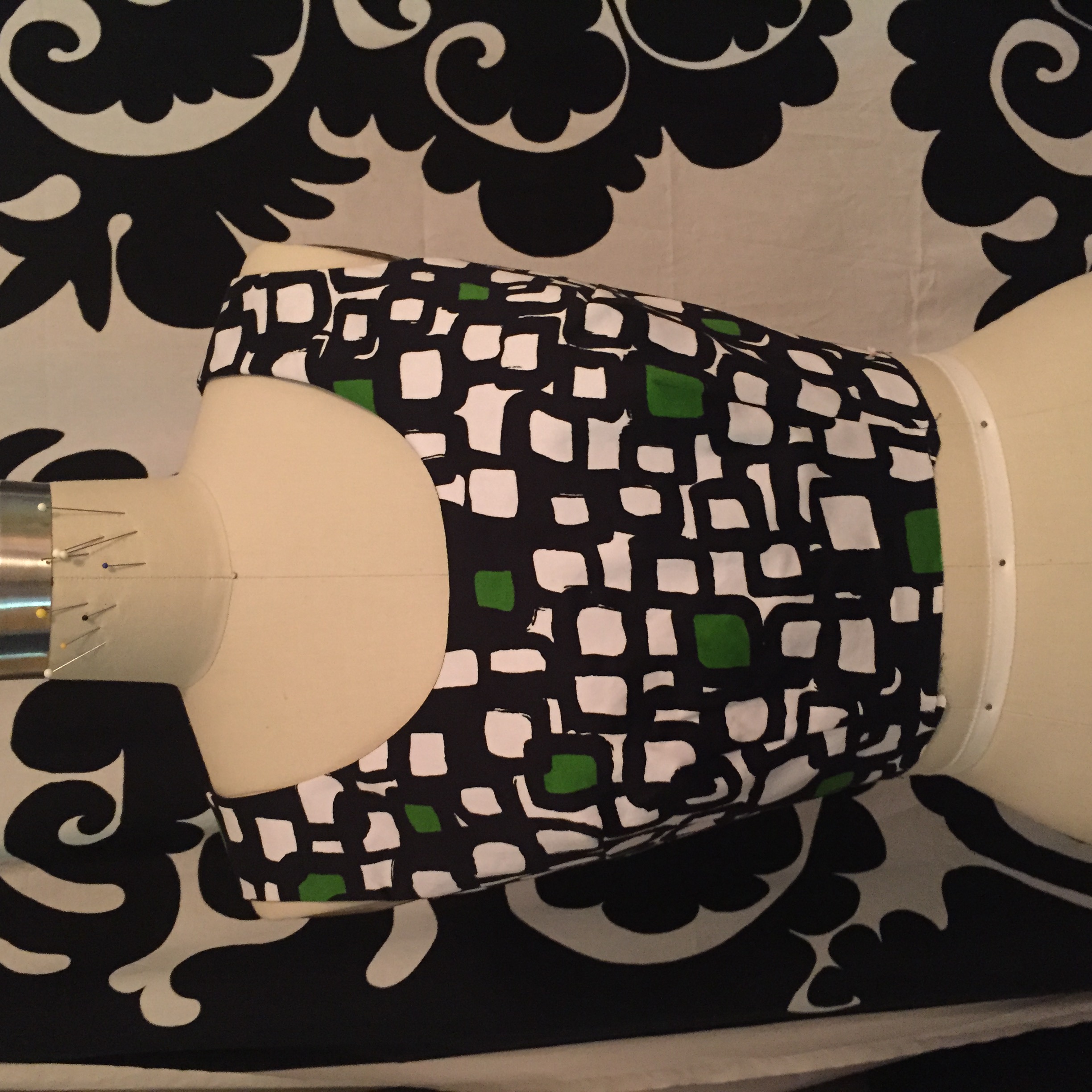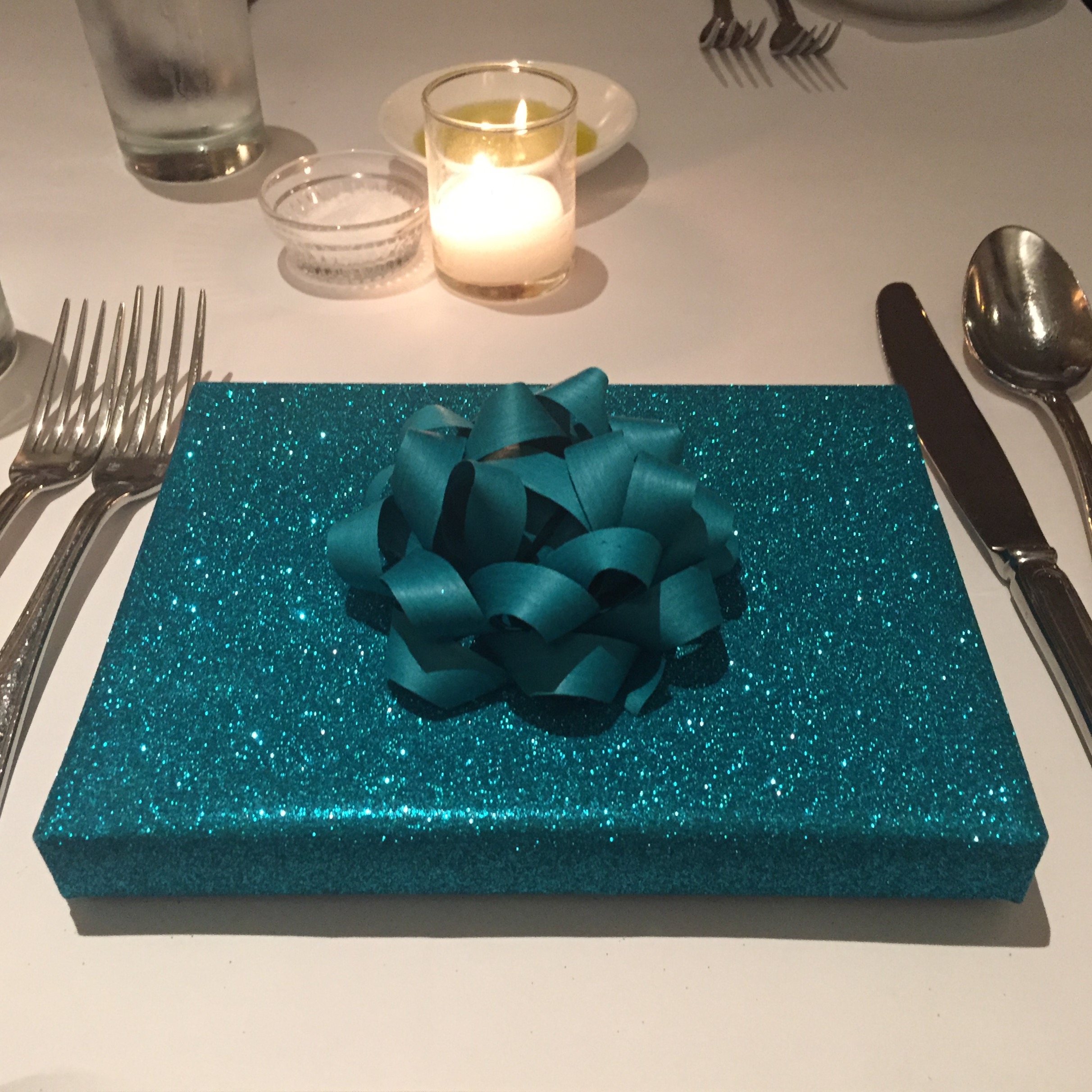The Artist's Way: Tips For Completing The Program
After a long-ago false start with the 12-week "creative recovery program" in Julia Cameron's book, The Artist's Way ("TAW" for short), I have finished. Victory!!!!!! Lots of exclamation points feel appropriate. Having abandoned it once, and now having completed it once, I have three tips in case you're interested in tackling this for the first time and want to complete the 12-week program:
- Read through Week One before you begin, and first decide how "by the book" you want your experience to be.
Cameron suggests you commit to daily writing via the "morning pages," a weekly artist date, and completion of each week's tasks. (Explanations of all these things are in the book.)
It would have taken me a year just to do all the tasks, and my life has a satisfying number of events that qualify as artist dates. So I decided my main commitment to completing the program was to write those morning pages, 3 per day, every day, for 12 weeks.
- Find support from a peer group.
I was really lucky: As I considered jumping into the book again this spring, I received an email from a local craft studio (in fact, called CRAFT) that they were putting together a group to follow TAW for 12 weeks. About 10 people participated, and the idea was to meet each Monday, discuss progress from the previous week, and maybe complete a little craft together. Summer happened, and only 2 of us ended up finishing the entire program in the 12-week period, although some combination of at least 4 people seemed to meet each week anyway.
Even though everyone had different goals and a different approach to the program, it was really helpful to have cheerleaders and co-commiserators (writing three pages a day is a challenge for most everyone!) offer their support, ideas, and enthusiasm. I enjoyed getting to know these artists, who had different perspectives about creative challenges and solutions. One artist joined the group to get momentum finishing a small but highly emotional piece, and through group discussion, revealed an unrelated huge project that had been sitting, untouched, for six years. She finished her small piece, and after our meetings, she resurrected the huge project and is updating it for publication.
If you scour Craigslist and Meetup.com and don't see a group in your local area that you can join, consider starting your own, in person or virtually. The benefits of a peer group are enormous.
- Plan your weekly progress on your calendar, so you stay on track.
One of the best things I did to help me stay on track was to put an appointment in my calendar (iCal) each Monday with that week's chapter. So if you look at my calendar, on June 15, there is an appointment at 6am called "TAW: Week One." It was my prompt to read the chapter corresponding to Week One and start writing about some of the topics and tasks for the new week. On June 22, my 6am appointment was called "TAW: Week Two" to remind me to stay on track. And so on, for 12 consecutive weeks.
Maybe you'll prefer to start your week on a different day, which is fine. My point is that I never questioned where I was in the program because it was on my calendar.
I wrote a Goodreads review of The Artist's Way by Julia Cameron, in case you'd like more detail both on what I thought of the book, as well as the overall experience of completing the program. I'll restate the final sentiment of my review here: This is a great book for everyone, not just "creative" folks, because when you think about it, we are all creating a life. Might as well make it one we love.
Think Bigger
“Whatever you’re thinking, think bigger.”
Or don’t. ;)
Bigger can be amazing! But bigger is not always better, and I say that as a Texan. By mindlessly pursuing “bigger,” you could ignore values that influence your current success and satisfaction.
At least once a week, I see a major news story about middle-class Americans — often middle class American women, specifically — who “want it all”:
- a happy and successful family
- a strong marriage / personal partnership
- a thriving career
- perfect mental, emotional, physical, and spiritual health, and
- an ideal balance between all these things and everything else their hearts desire.
After all, don’t we all deserve the biggest life we can imagine? In reality, bigger is not necessarily better. There are trade-offs, because the fixed constant is time: 24 hours each day, every day. As we make more investments (of time, money, energy) in our increasingly bigger lives, we will eventually reap diminishing returns on our investments.
I also see businesspeople who are consistently challenged to think bigger and grow bigger. They create a massive to-do list that stresses them out, and over time this stress spills over, onto the rest of their team. Because any growing business cycles through the law of diminishing returns, they get frustrated when their higher level of investment in the business is not producing significantly higher levels of results. After some reflection, some say that they wished they had done a better job of balancing their desire for lots of personal time with the to-do list for massive business growth. Others share that they chased the goal of bigger without any regard for what was truly important to them.
So I never assume bigger is better.
And yet, here are some ways I can flow with this quote:
- Think bigger just to see how big your idea can go. Does that excite you? Does it make you want to shake trees and make it happen? Is your team and your family on board with this vision? Yes? Then go get it.
- Think bigger as a contrast to the way things are now, and explore the gap in between. Even if that huge thing is not exactly where you want to go, maybe there's a spot in between that looks like a good growth goal.
- Invite your work team / family / friends to think bigger, together. A dream board is a great way to think really big, while deciding later what kind of timeline you might put on it. No commitments, just freedom to dream and envision.
Think big, yes. Then think bigger. And then make good decisions that honor who you are and the values that guide your business and your life.
NYC Weekend 2015
This pic was taken from the 86th Floor Observatory of the Empire State Building on our last night in NYC, so I'm getting ahead of myself chronologically. But why not start with this pic? Kyle and I chose to make Midtown / Garment District our home base on this trip, instead of Chelsea. From the ESB you can see it all: Madison Square Garden with its blue-lit roof toward the left, and our hotel, The New Yorker, toward the right.
We stayed a couple blocks away from Metro Textiles, one of our fave places to go when we're there. On my previous visit, I'd purchased this bold graphic cotton sateen and had no idea what I'd do with it. Simplicity 1873 had been calling my name for a while, so I paired the two. I am pretty sure I only purchased 1.5 yards, but Kashi doesn't measure in a traditional way -- he sort of guesstimates the fabric length -- but I've always found him to err generously in my favor. It turns out that his generosity saved the dress. I had just enough, though well over 1.5 yards. And although the dress fits Clementine perfectly, it is a tiny bit big for me in ways I find hard to diagnose and fix. But that is maybe for another post.
Kashi remembered the fabric and commended the dress. Then, like a true fabric-aholic, I went to work finding more fabric. He offered me the stepstool for the first time, and I'm sure it's no coincidence that I found and purchased about twice as much fabric as usual.
At this point, it appears I stopped taking pics for the day. We had lunch at MAOZ, sauntered to Kinokuniya for postcards and fun stuff, and wandered back through the Garment District, at places like Pacific Trimming, Paron Fabrics, and the new Lauren Trimming (247 West 37th Street). I purchased a faux Liberty print cotton and a reversible polka dot cotton (Tom and Linda Platt) from Paron's. More polka dots! Couldn't help myself.
We headed to Chelsea that evening for The City Quilter, where I purchased a sashiko kit, and the unexpected sad news that Pongsri, the Thai restaurant that Kyle so loved when we were in NYC last, had closed. So we grabbed a bite instead at Epice Cafe and called it an early night in. Kyle taught me how the sashiko worked, and I stitched late into the night and finished Oprah Winfrey's book, "What I Know For Sure."
The next morning we hit Beacon's Closet, but neither of us found anything that fit perfectly, nothing we couldn't live without. I think they rearranged their merchandise a bit, and the new setup is less conducive to falling in love. We lunched at Claudette and walked into Soho through Washington Square Park. Flowers were beautiful, and people were everywhere. There was a section of the park where men and women were sunbathing topless, and Kyle and I got a kick out of watching the young men who were ogling the topless ladies. LOL
We saw a serene little garden spot just outside the park, so we stopped to visit. It's called LaGuardia Corner Gardens, full of color and nature.
At Purl Soho, I found neon pink cotton and a shop gal who was very friendly, unlike the last time I was there. She'd only worked there a month or two, so I hope she stays helpful and interested. We hit tons of spots in Soho on the way to Opening Ceremony, such as Muji, Pearl River, and some specialty sock shop that I imagine won't be there for long. I don't know what kind of business model allows you to stock approx. 20 styles of socks and allows you to pay Soho bills.
But Opening Ceremony was it for me. Not the dude sitting in front of the store when I took this pic, but the store itself. I don't know who that dude is. I have stalked the online shop for years, but nothing compares to the retail store. It is beautifully staged and curated. The clothing is a wonder to behold. The materials, construction, and design took my breath away. Unlike every other Soho store I've shopped at, every salesperson in OC is friendly and helpful. They seem to love the clothes and want you to love the clothes, too. Very enthusiastic energy.
I wanted to go home and start draping something on my form. So inspiring, the quality, craftsmanship, and detail.
I'll always remember.
We were pretty pooped by that point, so we went back uptown (funk you up, uptown funk you up). After a couple hours' rest, we headed to The Highline, walked south into Chelsea, and ate dinner at a cute restaurant called The Red Cat. The cold sweet corn soup was TO DIE FOR. Eat it. You'll thank me later. Kyle wanted to celebrate my birthday early, and she came prepared.
On the left there is the card. Kyle always maxes out the stickers! Too fun, and so colorful. The card itself -- I mean, come on! -- functioning zippers on that miniature biker jacket. It was perfect! The present was wrapped flawlessly in Kyle's signature turquoise, and the gift... Check it... Woven ROCK ON TINY REBEL labels! I couldn't wait to get home and sew a label into something!!!!!!
Kyle. You're the best.
After dinner, we walked to the Empire State Building to see the great views of the city. And it was crowded, even at 10:30pm! But totally worth it. We even got super-touristy. And loved it.
Walking through the Saturday night crowd the few long blocks back to the hotel was just invigorating. The city is so ALIVE. I am still smitten.
QuiltCon2015
QuiltCon is a modern quilting conference that originated in 2013, and it came back again last month, both times in Austin. (Yes, modern quilting is a thing!) I didn't attend in 2013, as QuiltCon came on the heels of another annual conference I attend, and I just literally couldn't... attend another conference so soon. I was conferenced out. As soon as QuiltCon2013 was over, I regretted not going! So last year I paid dues to my local Modern Quilt Guild, which would give me and other members a week of pre-registration before the general public could register.
And it didn't matter. Because all the workshops I wanted to attend were full within minutes of pre-registration going live.
Disappointed but undaunted, I purchased an exhibit hall pass and admission to 3 lectures. They couldn't have been more diverse (one on copyright, one on teaching quilting, and the third featuring a specific artist), and I learned so much from each that I will probably write a different blog post for each.
That quilt cracks me up! As featured in Quilt Talk, by Sam Hunter. Does it seem counterintuitive that a stereotypically quiet quilter would be anything close to unpleasant, nay, subversive? Sometimes a creative medium helps us to find our voice, and provides a more comfortable forum for shouting loud the things we don't feel safe saying to someone's face.
Years after admiring some of her unicorn illustrations, I got to meet Melissa Averinos, thanks to an intro from our mutual friend, Sarah Moon. Melissa and I are standing next to her crazy-inventive, Judge's Choice award-winning face quilt.
Let's challenge some stereotypes: in the exhibit hall, this tattoo station was among the busiest. The lady in the gray and white striped shirt showed me her ink from QuiltCon2013, and was excited to stand in line for her next life marker.
QuiltCon will become an annual conference now, with QuiltCon 2016 taking place in Pasadena, CA. I'm not sure I'll incur the expense of travel and lodging for a few lectures and the exhibit hall, assuming I get shut out of the workshops again, but it was great fun this year, and I'm glad I attended. I'm converting my notes into blog posts now, so stay tuned for more photos and updates.
On Receiving Feedback
I think I'm a creative being, and you probably see yourself the same way. I create some things for myself, in which case, how I feel about that work is all that matters. But I create a lot of things for other people, and rely on their feedback for my own growth, so I know if what I'm making helps or even matters, and how to get better.
Heading to one extreme is dangerous. Making decisions by committee 100% of the time makes it impossible to create consistent work that is reflective of your signature.
Some feedback is less relevant, or not very helpful. This kind of feedback, even just a little, sends some people off the rails, deciding that no feedback is better than ill-intentioned or misinformed feedback. Pinterest is full of memes that encourage us to shrug off the critics and JUST BE YOUR MOST AUTHENTIC SELF cause haters gonna hate. This self-protective advice tells us to ignore all outside criticism, cushion our fragile egos with the adoration of our supporters, and never leave the cozy cocoons of support groups / social media networks / creative retreats with like-minded individuals, for fear of shutting down our courage to create.
But surrounding ourselves with only positive feedback can send us and our work down a quick path to irrelevance. Assuming that we create better when we are open and responsive to all feedback, how do we distinguish between feedback that stings because it's mean-spirited, and feedback that stings and can help us grow?
So how can we work productively with feedback?
Here’s what I do:
1. Prepare, if I can.
In some cases, such as during formal review processes, I know feedback is coming. It’s built into the agenda. So I assume the person offering feedback is doing so with good intent (to help me grow), and I prepare to receive the feedback with an open heart. I smile, to put myself and the person giving me feedback at ease. I ask if I can take notes, so that I don’t forget anything.
2. As I hear the feedback, I stay neutral and grateful.
It can be tempting to go into explanation mode or otherwise defend myself, or (in rare occasions) even go on the counteroffensive. Smiling helps a lot when I feel myself going defensive. In order for this to remain a feedback session and not an argument, my role is to receive the message, ask questions to clarify when needed, and act on the feedback later.
Another question that is OK to ask is, “What alternative do you suggest?” or, “What would you like to see instead?” It’s reasonable that the person giving feedback can also suggest a solution.
Someone stopped me in the hall to offer unsolicited feedback about a group activity in a workshop I recently facilitated. Everything she said pointed to something I could do to ensure that this situation, which had never come up before, wouldn’t happen again. But when I asked her, “What alternative do you suggest for me?” she said, “Nothing. I don’t think you should change anything. This was about how I reacted and what I learned.” The discussion went in a whole different direction from where I thought she was headed, and I would have made incorrect assumptions had I not asked that question.
At the end of the feedback session, I remind myself how giving feedback can take immense courage, and I thank the feedback giver for sharing with me. My appreciation is genuine, because no matter what, I know I will always learn something!
3. After the feedback session, I do most of the processing.
There are only two things to do: (1) act on the feedback or (2) nothing.
Here’s the kind of feedback I get that I’ll almost always act on:
- Feedback I already knew or heard, and has now been validated. Easy. Make the change.
- Feedback that may sting a bit, but carries a thread of truth even after the pain is gone.
- Feedback from someone I trust completely. This feedback deserves weight because of who said it.
Here’s the kind of feedback I’ll spend more time processing, and may or may not act on:
- Feedback that is more biased personal opinion, rather than opinion formed relatively free of that person’s personal context. (“Well, I’m afraid this step of your plan would be a waste of time, because when I tried it on my project, which is nothing like your project, it failed…”) More critical analysis can help decide whether I use this feedback or not.
- Feedback that is in the clear minority. One dissenting opinion out of fifty won’t get me to change direction. A successful public speaker I admire greatly says that his ratio is 1:20.
- Feedback that is more of a personal judgement than analysis. This requires additional reflection, because even though it is not the feedback I expected, it might still be valuable feedback.
4. If I’m still chewing on some feedback, I get an outside opinion.
I said chewing, not stewing. Chewing is a mental process. Stewing is an emotional process.
- Seek a second opinion. I’m not trying to build a case against the original feedback, or against the person who gave it to me. I’m ready to face the music if the second opinion confirms the first.
- Ask the second "opinionator" (Evernote does not believe this is a legit word, but I'm not open to that feedback right now) to help me come up with ideas to tackle my challenge. Sometimes the best alternatives come from those who have distance and objectivity.
- If I’m still not ready to take action, I get clear on the opportunity if I take action, and the cost if I don’t.
- What is the best that can happen if I change this?
- What is the worst that can happen if I don’t?
I let these answers guide urgency behind change based on original feedback.
What about you? What tips and suggestions do you have for handling feedback productively?
EXTRA CREDIT:
- The effect of Yes Men and Women on creativity
- The effect of Yes Men and Women a business' bottom line
- It pays to leave the echo chamber from time to time -- Margaret Effernan's TED Talk: Dare to Disagree
Tidying, Part 1
Last fall, I couldn't look anywhere without seeing a reference to Marie Kondo's book, The Life Changing Magic of Tidying Up. I finished the book on New Year's Eve and began plotting my own 6-month tidying escapade. You see, after nearly 10 years in this house, we have accumulated so much STUFF. We have far more space than we need to live, and the truth is that much of the extra space is storage for our STUFF. I really like this system, because it is rooted in JOY. The antidote to STUFF is JOY. I can dig.
So, the first phase is all about the closet. Kondo makes a great argument for starting here, and a friend who started instead with her kids' toys (and then succumbed to the emotional attachment of said toys and got nowhere) has confirmed that the closet is a great place to start.
Kondo says to grab all the tops from all the hiding places around your house, put them in one place, and go through them one by one. The key is to only keep the items that bring you JOY. For items that don't bring JOY but still present an emotional challenge, you thank the items for serving their purpose, and send them to the donation bin. I did that twice! Ultimately, I let go of three garbage bags' worth of clothes (two of them only had tops, and the third had random clothing items that I knew I was ready to part with), and I believe it only took me an hour. Already my closet feels lighter, clearer.
There are 11 tops that I made that do not bring me JOY. I will photograph them before I bring them to the donation center. But I am already dreading the day I go through my dresses. I have made so many of them, and will have to work hard to distinguish between the dresses that bring me PRIDE in having made them, and JOY in wearing them.
Although I didn't anticipate making as much headway in January and February, just because I'm working and traveling so much, I see that March will be a huge month for me in making space for JOY.
What I read: The Creative Habit by Twyla Tharp
Nearly ten years ago, on first read, The Creative Habit made a significant impression on me. Like a meteor, falling through space, burning through the atmosphere, crashing without ceremony into my brain. A fly-by-the-seat-of-my-pants winger by nature, I considered the value of preparation in everything I did, because Twyla said so. Taking this advice to heart and building a solid preparation process has improved my creative output immeasurably.
I also stopped categorizing the seemingly disparate interests of my life into "creative" and "non-creative," and I started to think about everything I did (not just sewing clothes and playing music, but also negotiating contracts, writing manuals, and speaking in front of audiences) as a creative endeavor. This time around, I recognize that seeing myself as an inherently creative individual whose work is all creative has helped me to (ironically? coincidentally? accidentally?) create a life that brings fulfillment and joy every day.
It was with fond memories and much reflection that I cracked open The Creative Habit on New Year's Day. Reading the chapters on preparation, and scratching, and failure were like visiting an old friend. And, as you'd expect, I found myself captivated by other sections that are more relevant and immediate now than they were 10 years ago.
Here are two brief lessons that I didn't catch then, that I experienced on my own between the two readings:
- "Overplanning can be as pernicious as not planning at all. There’s an emotional lie to overplaying; it creates a security blanket that lets you assume you have things under control, that you are further along than you really are, that you’re home free when you haven’t even walked out the door yet."
- "Whom the gods wish to destroy, they give unlimited resources."
I specifically chose this book as my first book of the new year because I am starting to obsess over the importance of daily rituals, and I remembered Twyla doing a bang-up job exploring ritual in The Creative Habit:
- "What makes it a ritual is they do it without questioning the need."
- "By making the start of the sequence automatic, they replace doubt and fear with comfort and routine."
We follow rituals every day by accident -- we didn't design them, just fell into them. We follow some rituals with alarming consistency and absence of conscious thought. Isn't that kind of outrageous? I'm asking myself if the rituals are helpful or hurtful, and if there are steps I can add to them that will make them helpful in some way. Rituals are a great way to form habits -- are my rituals encouraging the best habits for me right now?
Here's my review of The Creative Habit by Twyla Tharp on Goodreads.
10 Best Books I Read in 2014, PART 2
Squarespace is gonna fight me on my numbered list, because this starts with #6 AND WHO AM I TO ARGUE WITH THE SQUARESPACE AI -- so here is the rest of my list with correct numbers and substandard formatting:
6. The Parallel Apartments by Bill Cotter
It’s kooky, quirky, and hysterically funny. At least a little bit brilliant. And happens to be written by an author who lives in Austin.
7. All My Puny Sorrows by Miriam Toews
Just because of the topic, this book will not be for everyone. But maybe it ought to be. I’m so impressed by how easy it is to know this narrator, Yoli — to really feel immersed in her skin, in her thoughts. But it was emotionally draining for me to read.
8. Ready Player One by Ernest Cline
My sole feel-good read of the year, which was actually published in 2011 and has been sitting on my shelf since then, unread until a few months ago. This was so much fun for me, and has been elevated to top-10 status because it’s the only book that my husband, 11-year-old son, and I all read (separately) and enjoyed. We were able to talk about it, muse over it, debate plot points in it, and basically create family time discussing it. Hope there’s a movie coming out of this one.
9. We Are Called to Rise by Laura McBride
Although the prose is a touch melodramatic, and the plot can feel contrived as can any story with a large, multi-character ensemble, there is so much truth embedded in this book. Plus, the story is set in Las Vegas and much of that is painfully and wonderfully familiar. I feel like this is similar in some ways to We Are Not Ourselves (and I’m not talking about similarity in the titles), but way better. Would have liked to have seen We Are Called to Rise on more of the well-known top 10 lists for the year.
10. Yes Please by Amy Poehler
I had a hard time picking my favorite 10 titles, which means I’ll work on an “Honorable Mentions” list soon. Yes Please is a book that came at the right time, with the right messages, for me. Having hit a milestone birthday in 2014, so much about my world, and my place in it, felt clearer, and in some way that’s due to Amy Poehler sharing her experiences, challenging the way I see things, and giving voice to some of my own latent thoughts and ideas. Although I can’t say this was even close to the best-written book I read last year, it has influenced me to action more than any other. Maybe Ms. Poehler can start a Smart Women offshoot of her successful Smart Girls initiative…
Honorable mentions to come.
10 Best Books I Read in 2014, Part 1
Happy New Year! One focus for 2015 is getting back to blogging, so even though this post may have been better timed as a year-end post, it's my first post of the new year. I read A LOT of books last year -- 96 total, probably an all-time high I'm not likely to come close to again -- and the best of those were really, really great. Here's Part 1 of my Top 10 books I read in 2014, in order (click on the title for my full Goodreads review):
- Wool by Hugh Howey
The best book I read in 2014 was published in 2012, but it was so exceptional in pretty much every way. (I wish I could say the same for the second and third books in the series, but I can’t, and I won't.) So I’ll heap lots of deserved praise on this one, which has got it all: memorable and sympathetic characters, a unique setting, and a plot that unfolds masterfully.
- Station Eleven by Emily St. John Mandel
Give in to the hype. You can almost feel yourself in this beautiful, futuristic setting, with these other survivors all around you, getting to know your tribe by hearing their stories. Post-apocalyptic without being even a little bit sci-fi.
- Men Explain Things to Me by Rebecca Solnit
This is the only non-fiction, non-memoir in my top 10 this year, either because the fiction was just so stellar or because I have become an unabashed fiction lover, but this is the only book I read in 2014 that I recommend to everyone, everywhere. Yes. EVERYONE SHOULD READ THIS BOOK. And then read it again. And everyone should then talk about it, and decide what to do next. It’s that kind of book.
- All the Light We Cannot See by Anthony Doerr
This has shown up on several top 10 lists I’ve seen this year, and I knew from the first few pages it would be on mine. This novel just glows, so brightly that not even 500 printed pages can obscure the glow. It made me warm from the inside out, and seemed to do so effortlessly. It was fun reading a recent interview with Mr. Doerr, in which he talked about how all those little details that came across so effortlessly had often perplexed him when he was sorting out how to put it all together.
- Fourth of July Creek by Smith Henderson
The liquid prose and flawless plot momentum serve as perfect foils to the complete stagnation we experience alongside our resident social worker hero, Pete Snow. This is one of a couple books this year in which the story unfolded with the requisite tension of a good mystery. Hooked me.
The rest of my top 10, plus honorable mentions, are coming soon (tomorrow?) to a blog near you (this one).
What I read: On Such a Full Sea by Chang-Rae Lee
[This is my first sort-of book review on this blog, at least in a long time. I've been writing reviews at Goodreads for a few years, and I usually don't reveal any spoilers by speaking less about details, and more about form and feeling and perspective and thought process and application. Let's just go with this and see what happens...]
Only a 3.5 star average on Amazon? I'm surprised. I wasn't the biggest fan of the writing style, which was so fluid as to lull me into a soothing rhythm of meditation, but it is probably exactly the writing style that the book needed. It's not that I was bored reading this -- just calm and meditative. I wasn't falling asleep, but I had the experience of reading to the end of a page and realizing I didn't know what I'd read. Then I'd go back, start at the last spot I remembered, get to the end of the page, and realize I again didn't retain anything. This happened more than I usually have patience for. But I envisioned the narrator of the story as an old man, spinning the yarn of Fan and her love, Reg, to a bunch of us youngsters, seated at his feet. It would be natural for us to zone out from time to time, and zone back in a few minutes later.
After a few sluggish chapters, where my interest was piqued just enough to keep me from putting the book down, the narrator entered a very purposeful, predictable rhythm: giving a wallop of a story, narrating Fan's journey with its hair-raising twists and turns, and then backing off for a long section, filling in details of the back story or the history SO I COULD BREATHE. This alternation felt good for me. I remember at one point, putting down the book to take a breath, and saying out loud to no one in particular, "This book is outrageous." Not outrageous bad, or outrageous outlandish, just WOW. The tension was gripping, the story very compelling.
I guess I thought the book would be rated higher because it really made me think and feel deeply. About the feelings... The quiet affection between Fan and Reg was written so delicately... The way that the narrator tracked the community's simmering reaction to Reg's and Fan's disappearance was easy to attune to... The heartbreaking treatment of an elder in the community as people struggled with emotions they couldn't handle, and turned outward, directed specifically at this man, made me cringe deep in the pit of my stomach.
I'm still thinking about this book! In the future dystopia of On Such a Full Sea, there is explicit social and economic stratification, written rules about where people belong and how they can behave and how little they control their own destinies, and a strong deference to the communal flow over individual thought, choice, and will. Even though those written rules don't exist in the present day, I'm asking myself: How closely do those written rules of the fictional future reflect the unwritten rules by which we live today?
Distractions in the Learning Environment
There are so many things that can distract a learner from focusing on content:
- What happened to them before they came into the classroom
- Exciting things / traffic happening outside the classroom window
- Competing visuals, i.e. flip chart pages all over the walls, active slide projected on the screen, working groups milling about the room
- The temperature of the room
- And the list could go on and on
What's a properly prepared instructor to do? Can we adequately plan for every possible distraction before we walk into a learning environment?
We can plan for more than we think, and frankly, that's our job. Preparation solves at least 90% of the challenges we will face in the classroom. Generally speaking, we all know we can:
- Know our content inside and out!
Mastery of the content means less time obsession over ourselves, and more time to focus on who really matters -- everyone who cared to show up for our class. - Review every discussion and exercise that is planned, and ensure ahead of time that they physical environment supports moving into and out of workshops quickly, and supports maximum learning in general.
If we need people in groups of 4-6, and we have tables that seat 3, classroom-style setup with 5 rows and 2 columns with an aisle down the middle, how do we give instructions to minimize confusion and get right into the activity? If panoramic windows are to everyone's left, can we draw the blinds in a way that we keep great natural light and keep the passers-by on the sidewalk from garnering attention from our learners? - Be strategic about where focus should be in the class.
If we are not talking about the slide on the screen, turn the screen off (B or W on the keyboard, or use the presentation remote). If we aren't going to use the flip charts anymore, take them off the walls, or consolidate them in the back of the room. Use a tool that keeps track of the room temperature, and aim for a comfortable range of 68-73 deg F. We know if it is trending out of that range, it's time to actively manage that, before we see too many shivering bodies or people start peeling off layers of clothing and soon no one remembers what class they're in.
Is it possible to change circumstances in each learner's world outside of the classroom, so that they are not distracted by "real life" that is happening without them, while they are in class with us? Often, the answer is no. And we have a unique opportunity to exercise a form of leadership that is so effective that what happens inside the classroom is far more important and urgent than anything begging for their attention outside the learning environment. More on that in the next post.
Keynote Remote
Sometime soon, I’ll share more about Keynote on iPad, which in itself is just lovely and wonderful and incredibly productive — but what really blew me away recently was the addition of Keynote Remote on my iPhone to control the presentation. I was in a training room where the only connection to an LCD projector was via wire in the back of the room, and as I was using my iPad, I couldn’t easily give the presentation from the back of the room. I remembered the Keynote Remote app, and 99 cents later, I was scrolling through my iPad presentation from my iPhone.
Quick notes:
- The iPhone and iPad worked perfectly in a test scenario at home, but in the training room, there were a few instances of dropped connections. Not sure how that happened since both devices were on the same wi-fi network AND they were linked Bluetooth. But I was able to pair them up again in a matter of seconds.
- The Keynote Remote app is great because, in landscape mode, you can see both the slide you’re projecting and the next one. That said, this app could do SO MUCH MORE than a few functions. How about a blank option, a mouse, a pointer than you control by touching your fingertip to the projected slide on the iPhone?
When I get a call from a potential client who says, “Hey, I am having this problem with my business and I need help solving it,” I think I might feel as inspired as this dancer did when he heard this song. There’s an internal motivation to create a solution that really enhances the business, like the dance completely enhances and elevates the song.
PUMPED UP KICKS|DUBSTEP (by WHZGUD2)
When Leadership Highs Outweigh the Lows
A friend called me today to share a story. She met with a visible public figure recently, and after the meeting, my friend wrote up some thoughts about the meeting and emailed them to a small group of friends and business associates who might be helped by hearing her thoughts. (This public figure happens to represent issues that affect my friend both personally and professionally.).
Maybe you know the twist to this familiar story: The email got forwarded once, twice, three times a lady, and ended up back in the hands of this public figure, who called my friend and was quite bothered — at how the tone of the email might negatively reflect on the public figure, might have misrepresented things this public figure said, and maybe felt backstabby.
My friend, who is a skilled and influential leader, expressed such regret to me that she had worked for years to build her reputation and relationships in her field, and with one email she felt she had flushed it all down the drain.
In companies everywhere, this scene is played out. The details may be different but the first lesson remains the same: watch what you put in writing because different people can read the same email in very different contexts! :)
We ended up having the richest discussion, though, on how our careers are not built in a day, and they are rarely taken down in a day. Today, emotions are high. Tomorrow, they will surely be lower. And the day after that they will be still lower. And so on, until the emotions are right where they need to be — taken in sum total with every bit of good work my friend has done over years. And like a trusty math equation, one small, momentary “minus” doesn’t make a dent against the hefty “plus” column.
So chin up, leader. There’s still work to do and the world still counts on you to work your magic. Let’s go!
Chez Panisse turns 40
Can you feel it? The cool, crisp air of fall (depending on where you live) and the first rumblings of 2012 business plans. I love a good business plan — the excitement of potential not yet realized, the clarity of vision we gain, the geeky Excel-iness of it all. We can get so caught up in planning the future that we forget the purpose for what we do that grounded our business in the first place.
Both Daniel Pink’s A Whole New Mind and my current read, Jim Loehr’s The Power of Story, talk about how integral purpose is to success. Alice Waters and Chez Panisse exemplify that passionate purpose can provide a business not only a solid foundation, but also an influential legacy, even in the notoriously fickle restaurant industry.
Remember to take that extra step in planning for your business to reconnect and realign it with purpose.
Artist Shea Hembrey talks about creating his own personal biennial exhibition in a way that is completely charming, totally unpretentious, and absolutely inspiring.
“The enemy of art is the absence of limitations.”
Rework, by Jason Fried and David Heinemeier Hansson.
Really great, quick read, written in a very concise and crisp style. My major takeaways:
- Start at the epicenter and focus on the things that won’t change.
- Sell your by-products.
- Make tiny decisions.
- Build an audience, and out-teach your competition.
- Give away an easily digestible intro to what you sell.
I can absolutely start working on those now. Getting this blog back on track is a tiny decision I could make tonight! Chip chop!
Countdown Timers
An indispensable training tool is the countdown timer. This allows everyone in the class (esp. us!) to be fully aware of time remaining before/ between sessions and on breaks. You run the countdown timer on your computer and the countdown is projected onto the screen for all to see. Here are a few I have used:
Online — must have live internet connection:
http://www.online-stopwatch.com
Mac only —
Minuteur 3 (free) or 5 (paid): http://phg-home.com/index_mac.html
Windows only —
BlingClock (30-day free trial, $20 after): http://www.blingclock.com
TimeLeft (free but you can’t make timer fullscreen): http://www.timeleft.info

































